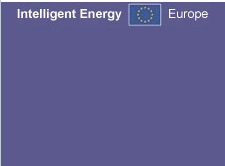





Normally, the sequence of changes in an individual leading to behavioural change can be sketched in the following way (Steckler et al ., 2002). It begins when the individual becomes aware of a problem or need which gives the individual an initial reason or incentive to pursue a given course of action. This awareness is often raised by external forces. Sometimes experiences of peers raise the individual's awareness of a problem. Most of these problems or needs are routine, so most problems are solved in a routine way following standard actions (Cyert and March, 1992). This is what we call “habitual behaviour”. And often there is hardly any awareness of the solving process, it simply occurs.
But if a problem is new or does not regularly occur, than a search for solutions starts. In this search for solutions, knowledge of alternatives is gathered and evaluated. The individual weighs the advantages and disadvantages of behavioural alternatives and makes a decision. Advantages and disadvantages (costs and benefits) are not only seen in terms of money, but also in terms of comfort, quality, image and perceived uncertainty. Values and norms also influence the assessments of advantages. This weighing of advantages and disadvantages leads to the forming of an attitude. An attitude is, thus, a form of evaluation directed towards a specific action or a situation and is cognitive, affective and normative in character. All the factors, awareness, knowledge, norms and values, and attitude, lead to an intention for making the decision to implement the solution. This intention may suffice to start the change in behaviour, but it will not be carried out unless the individual has the required resources and skills, and no barriers stand in the way.
Often such a change in behaviour is followed by an emotional, physical or social reaction towards the behaviour from the context. This feedback directly strengthens the behaviour. Rewards and positive feedback make the behaviour more attractive on the next occasion. The availability of resources also positively influences the factors motivating the behaviour. After establishing the new behaviour, the individual actively seeks for confirmation of his or her decision in feedback from peers or experts. So we see is that behaviour is a product of the individual and its environment.
 |
|
|||||||||||||
|
|
|
|
|
|
 |
|||||||||
 |
||||||||||||||
|
|
|
|
|
|
|
|
|
|
||||||
 |
 |
|||||||||||||
 |
||||||||||||||
|
|
|
|
|
|
|
|
|
|
|
|
|
|
|
|